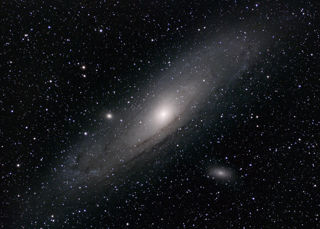
Space Shuttle Tools for Closing Nose Landing Gear Doors
Space Shuttle Tools for Closing Nose Landing Gear Doors
The Space Shuttle design included three retractable landing gear (wheels and brakes). These were only deployed during the final stages of landing, remaining stowed away at all other times. As the landing gear were stored behind crucial thermal heat protecting tiles, it was important that deployment could only happen in the final stages of landing – as a gap in the thermal heatshield on re-entry to the Earth’s atmosphere would prove catastrophic. To ensure this, one of the design features was to lock the doors where the landing gear were stored in such a way that they could only be opened by manual controls – these two yellow tools and key assisted in that process and made sure that the landing gear remained stowed until needed.Part of the German pop artist Andora’s collection, these Space Shuttle tools are connected to the Soyuz TM-25 mission and the joint operations between Russia and America on the Mir space station. Soyuz TM-25 saw the launch of Vasili Tsibliyev, Aleksandr Lazutkin and Reinhold Ewald to Mir in 1997. Ewald was the second German space traveller to visit the Mir space station, spending 18 days on Mir as part of the German Research Ministry backed, ‘Mir ’97’ initiative. This national connection saw German born artist Andora design an unofficial mission patch – which can be seen on the top of this NASA case.
At this time the USA and Russia were cooperating in space, with American astronauts spending time aboard Mir. Space Shuttle missions STS-81 and STS-84 took place either side of Ewald’s stay on the space station, dropping off astronauts for extended stays aboard. It is likely that one of these two missions carried these tools, and later on Andora modified the NASA carry-case to associate the contents with Ewald’s flight in 1997.
Born Andreas Hoge, but better known by the pseudonym Andora, the German artist is famed for having painted a Russian Proton rocket before it was launched into space. Andora was commissioned by the German ‘West’ cigarette company to paint artwork on a Russian rocket, whilst advertising their brand. As part of the project Andora became the first civilian allowed onto the Russian Baikonur launch site in 1992. He would also carryout commercial cosmonaut training at Star City, where he met many luminaries of the Soviet space programme – through these contacts, Andora began amassing an impressive space memorabilia collection, which would go on to include these relics of the American Space Shuttle.
All images:
-
![Space Shuttle Tools for Closing Nose Landing Gear Doors]()
Space Shuttle Tools for Closing Nose Landing Gear Doors -
![Space Shuttle Tools for Closing Nose Landing Gear Doors]()
Space Shuttle Tools for Closing Nose Landing Gear Doors -
![Space Shuttle Tools for Closing Nose Landing Gear Doors and NASA Case]()
Space Shuttle Tools for Closing Nose Landing Gear Doors and NASA Case -
![NASA Case Containing Space Shuttle Tools for Closing Nose Landing Gear Doors]()
NASA Case Containing Space Shuttle Tools for Closing Nose Landing Gear Doors -
![NASA Case with unofficial mission patch for 'Mir '97' designed by Andora]()
NASA Case with unofficial mission patch for 'Mir '97' designed by Andora -
![Unofficial mission patch for 'Mir '97' sticker designed by Andora]()
Unofficial mission patch for 'Mir '97' sticker designed by Andora -
![NASA Case Containing Space Shuttle Tools for Closing Nose Landing Gear Doors]()
NASA Case Containing Space Shuttle Tools for Closing Nose Landing Gear Doors -
![NASA Case close up of label]()
NASA Case close up of label -
![NASA Case decorated by Andora]()
NASA Case decorated by Andora -
![NASA Case close up showing labels]()
NASA Case close up showing labels -
![NASA Case side view]()
NASA Case side view -
![Space Shuttle Atlantis Landing - Credit NASA]()
Space Shuttle Atlantis Landing - Credit NASA
More information
Object number
2015-7
Location
Artefact Store
Has this object been into space?
Yes
Dimension - Dimension, Value, Measurement unit
Depth: 24.0cm
Height: 25.0cm
Width: 40.0cm
Material
Metal
Associated Organisation
National Aeronautics and Space Administration
Associated Person
Andreas Hoge 'Andora'
Object Production Date
Circa 1997
Object Production Organisation
North American Aviation
Object Production Place
California
United States
On Display Status
Not on display
Copyright and Photos
Photography is shared via the license below.
However, some objects on this website are on loan to the National Space Centre and are being shared through the permission of their owners.
Commercial use of images from this website is not allowed without additional permissions being granted. To request permission to use images for purposes not covered in the license below, please contact [email protected]
Individual objects on loan to the National Space Centre may have additional copyright permissions, so advice should always be sought before use.
![]()
This work is licensed under a Creative Commons Attribution-NonCommercial 4.0 International License.













